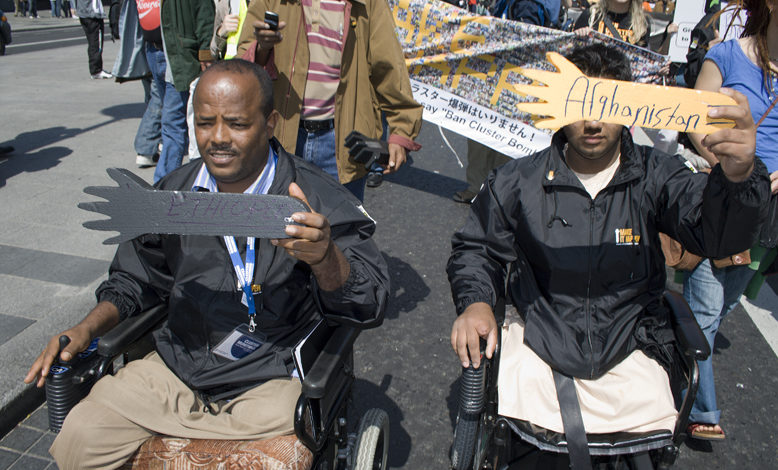
The United States has escalated the Ukraine conflict once again by announcing on July 7 that it will send cluster bombs to Ukrainian forces. Deeply controversial for their track record of killing civilians, cluster bombs are illegal under the Convention on Cluster Munitions. This international treaty prohibits all use, transfer or stockpiling of cluster weapons. More than 120 different states, including many NATO members, have signed the convention. The United States has not.
Since February 2022, the U.S. has sent over $76 billion in aid to Ukraine, with $46.6 billion of that amount going to military. The shipment of cluster bombs is estimated to cost over $800 million. Despite the amount of aid provided, western governments have not been able to replenish Ukrainian forces’ munitions as quickly as the munitions are being used. So the Biden administration is sending cluster bombs to keep the war running.
That some NATO members’ outlaw cluster bombs means the United States is sending these weapons independently rather than through the auspices of NATO. The reality of the Ukraine war is that it is a U.S. proxy conflict meant to weaken Russia.
International human rights groups have long fought to ban the use of cluster bombs, which immediately threaten civilians. These bombs became well-known internationally after the United States’ war against Vietnam in Southeast Asia, when the Pentagon rained down over 270 million cluster bombs over Laos alone, 80 million of which failed to explode. Undetonated cluster bomblets dropped by the Pentagon in the 1960s in Laos, Cambodia, and Vietnam continue to kill or maim civilians to the present day.
One cluster bomb is really a shell containing up to 2,000 smaller bombs. These bomblets can scatter over a wide area once released, resulting in potentially massive civilian death tolls over time, and killing indiscriminately. Cluster bombs have anywhere from a 2% to 40% failure rate, depending on the sub-variety. Undetonated cluster bomblets can lay undisturbed for years or decades before detonating, adding to the human death toll of a war for decades after it officially ends.
Many of those who are severely injured or killed by cluster bombs are children who mistake the small and often brightly colored bomblets for toys.
Israel’s 2006 war on Lebanon provided momentum for the campaign to ban cluster bombs. Four million cluster munitions, supplied by the U.S., were dropped on a country the size of Rhode Island during the last days of the 2006 Israeli war on Lebanon. Most targeted the tiny area of southern Lebanon. Approximately one million did not explode. To this day these bomblets are maiming and killing farmers, their families, hikers and others. It is even hard to know which areas are clear as, over the years, the tiny weapons shift positions in soft soil.
That the United States is providing Ukraine with widely condemned cluster weapons like cluster bombs is another example that increased brutality and destruction is U.S. imperialism’s response to the fact that it no longer monopolizes the global economy.
The U.S. capitalist class ‘s attempt to weaken Russia is also an attack on the rising BRICS nations, which have a combined GDP that recently surpassed that of the most developed capitalist countries (the U.S., the UK, France, Italy, Canada, Germany and Japan, often called the G7). Additionally, the BRICS bloc, comprising Brazil, Russia, India, China and South Africa, have been moving towards de-dollarization, i.e., using alternate currencies to conduct international trade rather than only the U.S. dollar. The U.S. sees this bloc as a serious threat to its economic hegemony.
The shipment of cluster bombs is only the latest in a series of inhumane provocations made by the U.S., resulting in enormous death tolls for Ukrainian and Russian forces and civilians. As war goes on, the U.S. continues to escalate it, and to get more and more directly involved. Meanwhile it is the working class here in the United States that is forced to pay the extremely high price tag for U.S. military aid in the form of social service cuts and increased taxes.




